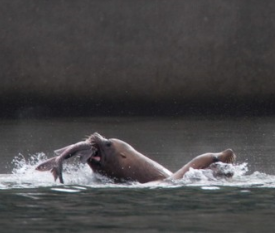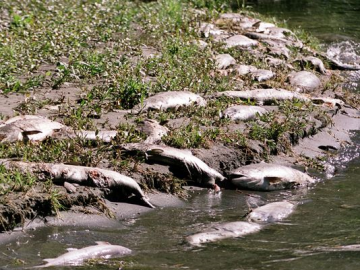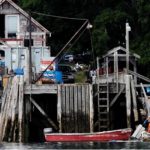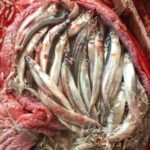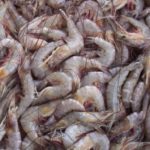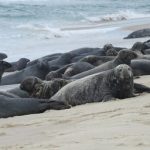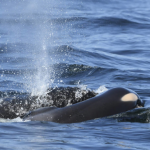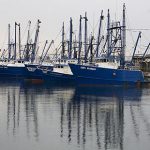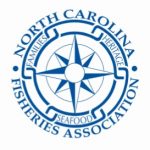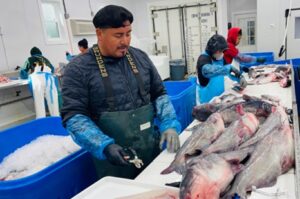Tag Archives: Columbia River Basin
Analysis of Northwest, other salmon hatcheries finds nearly all hurt wild salmon populations
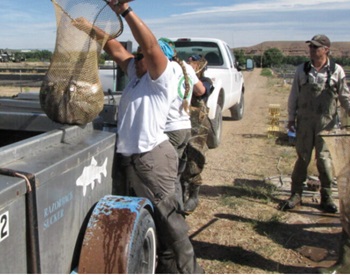 For much of the last century, fish hatcheries have been built in the Northwest, across the U.S. and around the world to boost fish populations where wild numbers have gone down. But an analysis of more than 200 studies on hatcheries programs meant to boost salmonid numbers across the globe – including salmon, trout and whitefish – shows that nearly all have had negative impacts on the wild populations of those fish. Most commonly, hatchery fish reduced the genetic diversity of wild fish, leading to poor health and reproductive outcomes. The findings weigh into a sensitive topic with a big price tag. In the Northwest, hatcheries are supposed to be a solution to declining wild salmonid numbers, caused in large part by hydroelectric dams, overfishing, irrigation and climate change. In the Columbia River Basin alone, officials have spent billions of dollars on nearly 200 hatcheries as well as habitat restoration projects during the past 50 years to improve wild numbers, but research shows those programs are having an opposite effect. more, >>click to read<< 12:34
For much of the last century, fish hatcheries have been built in the Northwest, across the U.S. and around the world to boost fish populations where wild numbers have gone down. But an analysis of more than 200 studies on hatcheries programs meant to boost salmonid numbers across the globe – including salmon, trout and whitefish – shows that nearly all have had negative impacts on the wild populations of those fish. Most commonly, hatchery fish reduced the genetic diversity of wild fish, leading to poor health and reproductive outcomes. The findings weigh into a sensitive topic with a big price tag. In the Northwest, hatcheries are supposed to be a solution to declining wild salmonid numbers, caused in large part by hydroelectric dams, overfishing, irrigation and climate change. In the Columbia River Basin alone, officials have spent billions of dollars on nearly 200 hatcheries as well as habitat restoration projects during the past 50 years to improve wild numbers, but research shows those programs are having an opposite effect. more, >>click to read<< 12:34
First Nations seek salmon return to Columbia Basin in new treaty with U.S.
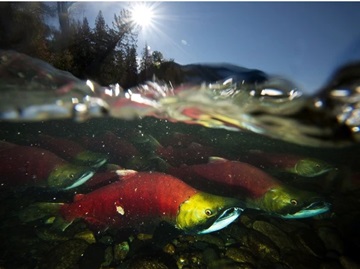 Representatives from the Ktunaxa and Syilx Okanagan nations say they continue to bring up salmon restoration in negotiations for a modern Columbia River Treaty and will not stop until a solution can be reached within or outside a new agreement. The U.S.-Canada treaty regulates the cross-border Columbia River to prevent flooding and generate hydro power. A key component of the 62-year-old treaty is set to expire in September 2024, lending urgency to the ongoing talks. “I think what we are doing in the fight to bring salmon back is vital to us moving forward,” said Lower Similkameen Indian Band Chief Keith Crow, who is a member on the Syilx Okanagan Nation’s Chiefs Executive Council and the Nation’s lead in the Columbia River Treaty talks. >>click to read<< 14:25
Representatives from the Ktunaxa and Syilx Okanagan nations say they continue to bring up salmon restoration in negotiations for a modern Columbia River Treaty and will not stop until a solution can be reached within or outside a new agreement. The U.S.-Canada treaty regulates the cross-border Columbia River to prevent flooding and generate hydro power. A key component of the 62-year-old treaty is set to expire in September 2024, lending urgency to the ongoing talks. “I think what we are doing in the fight to bring salmon back is vital to us moving forward,” said Lower Similkameen Indian Band Chief Keith Crow, who is a member on the Syilx Okanagan Nation’s Chiefs Executive Council and the Nation’s lead in the Columbia River Treaty talks. >>click to read<< 14:25
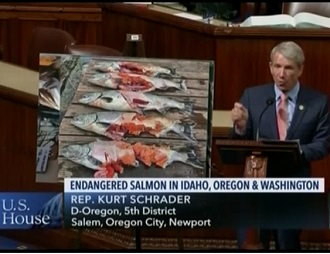
Congress must choose threatened salmon over sea lions
State, federal and local governments have spent too much time and money restoring fish runs in the Columbia River Basin to let those efforts go to waste. The U.S. House recognized this reality last month by passing legislation to make it easier to kill sea lions that feast on threatened salmon and steelhead in the Columbia River and its tributaries. Now, the Senate must step up and push the bill through to the finish line. Northwest senators must be unified in their support for this common-sense measure, which aims to safeguard the billions of dollars invested in preserving fish that are listed under the Endangered Species Act.>click to read<
Wild fish advocates threaten to sue over Columbia hatcheries
 Funding of chinook, coho and steelhead fish hatchery programs throughout the Columbia River Basin is being challenged by wild fish advocates who contend that hatchery fish adversely affect struggling native fish stocks. On Wednesday, the Wild Fish Conservancy based in Duvall, Washington, issued a 60-day notice of intent to sue the National Marine Fisheries Service and the U.S. Department of Commerce for funding. Columbia Basin hatchery programs under the Mitchell Act without complying with provisions of the Endangered Species Act. Read the article here 10:22
Funding of chinook, coho and steelhead fish hatchery programs throughout the Columbia River Basin is being challenged by wild fish advocates who contend that hatchery fish adversely affect struggling native fish stocks. On Wednesday, the Wild Fish Conservancy based in Duvall, Washington, issued a 60-day notice of intent to sue the National Marine Fisheries Service and the U.S. Department of Commerce for funding. Columbia Basin hatchery programs under the Mitchell Act without complying with provisions of the Endangered Species Act. Read the article here 10:22
NMFS issues overfishing notice for 4 northwest salmon stocks, and North Pacific swordfish
 The federal agency in charge of managing fisheries has ruled four stocks of Pacific Northwest salmon are being overfished. The National Marine Fisheries Service and the Department of Commerce on Wednesday posted a notice in the Federal Register of the excessive fishing pressures on Chinook and Coho salmon in the Columbia River Basin and along the Washington coast. The notice, which included overfishing findings for , is meant to alert fishery managers that fishing pressures are driving salmon populations down. Read the rest here 09:10
The federal agency in charge of managing fisheries has ruled four stocks of Pacific Northwest salmon are being overfished. The National Marine Fisheries Service and the Department of Commerce on Wednesday posted a notice in the Federal Register of the excessive fishing pressures on Chinook and Coho salmon in the Columbia River Basin and along the Washington coast. The notice, which included overfishing findings for , is meant to alert fishery managers that fishing pressures are driving salmon populations down. Read the rest here 09:10
Native American tribes start yearly harvest of eel-like fish, the Lamprey
 The jawless, gray fish are a traditional food source for tribal members in the Columbia River Basin, which stretches from the Oregon coast to Canada and into Idaho, Montana and Washington. Lampreys grow to about 2 feet long and are prized for their rich, fatty meat. Tribes have been instrumental in advocating for lamprey restoration, and the government has started paying attention. That’s because lampreys also offer an alternate food source for sea lions and other predators that otherwise would be munching on threatened salmon. Read the rest here 07:58
The jawless, gray fish are a traditional food source for tribal members in the Columbia River Basin, which stretches from the Oregon coast to Canada and into Idaho, Montana and Washington. Lampreys grow to about 2 feet long and are prized for their rich, fatty meat. Tribes have been instrumental in advocating for lamprey restoration, and the government has started paying attention. That’s because lampreys also offer an alternate food source for sea lions and other predators that otherwise would be munching on threatened salmon. Read the rest here 07:58






